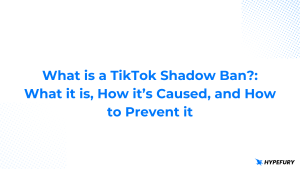Writing threads is the fastest way to grow and make your mark in the Twitterverse. Quality threads display your expertise, share incredible value, and show that you are worth some attention.
The problem is that shipping fantastic threads one after the other gets exhausting. And, you can only write about so much before your ideas run dry.
One way to always have something to write about is by summarizing great podcast episodes into value-packed threads.
In this article, you’ll learn how to use podcast episodes as templates for Twitter threads.
Using podcast episodes as templates for Twitter threads
Podcasts are one of the easiest ways to ensure you always have something to share with your Twitter audience. All you have to do is find ones that are a good fit for your brand and audience and share your takeaways from them.
Sharing lessons you got from podcasts with your Twitter audience is the ultimate content because you get to enjoy listening to your favorite content and creating content with no real effort at all.
To maximize the time you spend tuning into your favorite podcasters, you should summarize the best episodes into banging threads.
Here are reasons why you should use your favorite podcasts as templated for Twitter threads:
Threads are the best way to grow on Twitter
Nothing grabs attention on Twitter the way quality threads do. That is why everyone is constantly spinning out a new one.
If you can master the art of summarizing the value in podcasts into threads, you’ll have a guaranteed, healthy growing audience that appreciates you keeping them up to date on the topics they follow.
It doesn’t take a lot of effort
Using a podcast as a template for a thread is simple, and it will take a lot less time than creating entirely new content.
Summarizing a podcast is as simple as listening to the show with a pen and paper at the ready to take notes and heading over to Hypefury to get your first draft down when you finish.
It eases your content creation demands
Summarizing podcasts into threads gives you a reliable source of quality information to make content around. That means you can make and share content quicker than if you had to create content entirely from scratch.
It gets you on your favorite podcasters’ radars
If you summarize podcasts in your threads, tag the podcasts and credit them for inspiring you. That’s just proper creator etiquette, but it’ll get you noticed by your fave podcasters and you might even get retweeted to their large audiences.
Your audience will love the incredible content
Like reading books, everyone would like to listen to podcasts and learn from them, but many don’t have the time or know where to start.
Summarizing and recommending great podcasts to your audience is a great way to make yourself a valuable and irreplaceable part of their content diet.
How to summarize a podcast into a Twitter thread
The key to writing a compelling podcast summary is starting with a great podcast. Curate a selection of go-to podcasts on topics you and your audience to make finding to summarize easy.
Below is a quick guide on summarizing your gem of a podcast in a Twitter thread.
Listen to the podcast and take notes
The first step to writing a podcast summary is to listen to the podcast and take notes.
Listen to the podcast, and get all the juicy bits you can write down. It might take more than one listen, but it will be worth it.
Write the perfect hook
Every thread needs a great hook to stop people scrolling past with absolute indifference to it. Likewise, you need an enticing opening to lure people into reading your summary.
Check out these 101 attention-grabbing, scroll-stopping Viral Thread Hooks that our co-founder curated to help you craft your perfect hook.
Introduce the podcaster and guests
Once you have the hook down, you should use the next couple of tweets in your thread to tag and introduce the podcast host and guests.
A flattering introduction for the host and their guests will help your readers appreciate why what you’re about to share is worth reading to the end.
The introduction might also earn you engagement from them, which would get your thread in front of all their audiences.
Outline the important parts
Use the main body of your thread to drop all the juicy bits you got from the podcast.
Sharing the best parts of the podcasts will make your thread more attractive and show your readers that they can trust you to distill the essence of other episodes for them.
Your thread shouldn’t read like a transcript of the podcast. Keep it short and engaging to make your audience read it to the end.
Add your take
A big part of what will make your thread compelling for your audience will be your take on the podcast.
Sum up the thread with your thoughts. Write about what you learned, agreed and disagreed with, why you think the information shared is useful and how you would use it.
Including your take is an absolute must because it adds value to the content. Everyone that reads the thread will see that you put some thought into the summary and did not merely regurgitate other people’s ideas.
Lastly, including your thoughts on the threads encourages others to share their thoughts with you and move the conversation forward.
Other creative ways to create content
Finding ways to make the most of existing content is the only way to be a prolific content creator.
You need to create a system for maximizing and multiplying your ideas; otherwise, you will not keep up with the demand for content.
Here are other ways to make the challenge of content creation easier.
The AAAA framework by Dickie Bush
The first method for making your content go further is a framework used by Dickie Bush, the creator of Ship 30 for 30. Dickie credits the framework with making sure he never runs out of ideas, and now you can use it too.
The AAAA framework can help you turn one idea into four different pieces of value-packed content. Here is how to use the framework.
The A’s in the framework stands for Actionable, Analytical, Aspirational, and Anthropological. They refer to perspectives from which to create content about your ideas.
Using the framework, the first type of content you can create is actionable content in which you share insight and implemental information your audience didn’t have before.
Actionable content can be tips, hacks, resources, or instructions your readers can use to reach an objective.
The second type of content the AAAA framework can help you create is content from an analytical perspective.
Getting into the nitty-gritty of your idea and sharing the numbers, processes, and frameworks that support it is a powerful tool for helping your readers appreciate and unlock new ways of thinking about what you’re sharing.
Aspirational content is all about your ideas in practice.
Sharing your lessons, mistakes, reflections, and the realizations you’ve come to will give your audience a view of what you see when you look at the world through your unique lens.
Lastly, we’re all human and subject to the same feelings of fear, failure, and a whole host of other emotions and thoughts common to the human experience.
Sharing anthropological content which speaks to our universal human nature is a great way to connect with your audience on a personal level and get them to embrace your ideas fully and quickly.
Sharing similar content across multiple platforms
The second way to get the most out of your content is by utilizing it across multiple platforms.
Expanding your creator skills to pull it off will be difficult, but it will grow your reach exponentially. And, learning how to reuse your existing content will get you one step closer to being an outright pro at the content creator game.
The concept here is simple; clip your YouTube videos and repurpose them for IG Reels and TikToks, turn your blog posts into newsletters, then turn those into threads, and so on. Your viral tweets can be the inspiration behind a podcast episode or morph into long-form deep dives on your blog page.
You get the idea, right?
The point is that, with a little effort, you can use one idea to appeal to many different kinds of audiences. And, as they engage with you, they will each give you even more ideas that you can pitch to and use to spark conversations across all your other social media.






